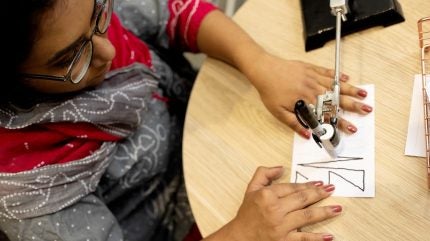
University of Sydney researchers explain that garment workers face some of the world’s most precarious working conditions, and the risk from extreme heat stress caused by climate change continues to rise.
A study that was published in The Lancet Planetary Health shows low-cost and scalable strategies that can reduce heat stress and protect worker productivity in Bangladesh’s ready-made garment (RMG) sector.

Discover B2B Marketing That Performs
Combine business intelligence and editorial excellence to reach engaged professionals across 36 leading media platforms.
It explains that Bangladesh’s garment sector is a $45bn industry that employs over 4m people, most of them are women, and represents 80% of Bangladesh’s export revenue, given it is the fourth-largest global garment exporter.
The study’s senior author, director of the Heat and Health Research Centre at the University of Sydney, Professor Ollie Jay says: “Garment workers in Bangladesh already endure some of the most precarious and gruelling conditions in the world. With rising temperatures, it’s only getting worse.
“Without immediate, scalable, and affordable cooling solutions, millions face a serious and growing risk of heat-related illness, exhaustion, and long-term harm.”
To address this, Professor Jay’s team looked at the effects of using different cooling methods in air conditioning on worker heat strain in a simulated Bangladesh garment factory inside a climate-controlled chamber that replicated the hottest conditions recorded inside a typical factory in Dhaka.

US Tariffs are shifting - will you react or anticipate?
Don’t let policy changes catch you off guard. Stay proactive with real-time data and expert analysis.
By GlobalDataThe study looked at simple cooling interventions such as:
- Insulated reflective roofs
- Electric fans
- Free access to drinking water
The study then benchmarked each of them against air conditioning or no cooling at all.
Key findings from cooling interventions study to tackle garment factory heat stress
- Without cooling interventions, heat stress reduced work output by around 12% to 15%. These losses were partly recovered through the team’s sustainable cooling strategies, which made cooling the individual instead of altering the surrounding environment the priority, such as using fans and having access to drinking water.
- A 2.5°C indoor temperature reduction from an insulated, reflective white roof lowered core body temperature, heart rate, and dehydration risk.
- Electric fan use combined with access to drinking water delivered similar benefits, reclaiming much of the heat-related productivity loss seen in high-intensity tasks like ironing.
- Cooling effects were more pronounced in male participants, highlighting the importance of reconsidering gender-specific tasks and clothing in heat mitigation strategies.
Lead author Dr James Smallcombe, a post-doctoral research fellow in the Heat and Health Research Centre notes: “The findings offer practical, scalable solutions for factory owners seeking to improve working conditions without relying on air conditioning, which remains economically and environmentally unsustainable.”
He continues: “With Bangladesh’s RMG industry targeting a 30% cut in greenhouse gas emissions by 2030, these low-resource options could offer a viable path forward for a sector under increasing pressure from both global demand and a changing climate.”
“The fashion industry has a moral and ethical imperative to reduce heat stress for workers and ensure basic provisions, such as access to clean drinking water. That includes both companies and factory owners. While air conditioning may help, it should not be seen as a silver bullet; instead, sustainable, affordable cooling solutions should be considered to protect workers’ health and wellbeing.”
The full results suggest that improving building design and supporting worker hydration could become key pillars of climate adaptation in global supply chains, protecting both workers and business continuity.
The Wellcome Trust funded the research. Dr Madeleine Thomson, Head of Climate Impacts & Adaptation at Wellcome shares: “Factory workers in sectors like the garment industry who are working in hot conditions are increasingly at risk from extreme heat stress caused by climate change.”
This study highlights that without cooling interventions, workers face serious health risks and reduced productivity – impacting both individual and business earnings. Yet, it also shows that even small, science-based changes can lead to significant improvements in health, livelihoods, and the environment – a triple win for communities.
She states: “Adaptation isn’t just about surviving climate shocks – it’s about building resilience and enabling communities to thrive. Leaders at every level –regional and national – must act now to deliver solutions that protect health and unlock opportunity.”
While the environmental conditions reflected those observed in Bangladesh, the researchers believe the findings will also be relevant to other countries with large ready-made garment industries, such as India and Vietnam, where extreme conditions are also common.
However, the researchers note that Bangladesh is widely recognised as one of the world’s most climate-vulnerable countries, facing heightened risks from sea-level rise, extreme weather, and heat stress.





